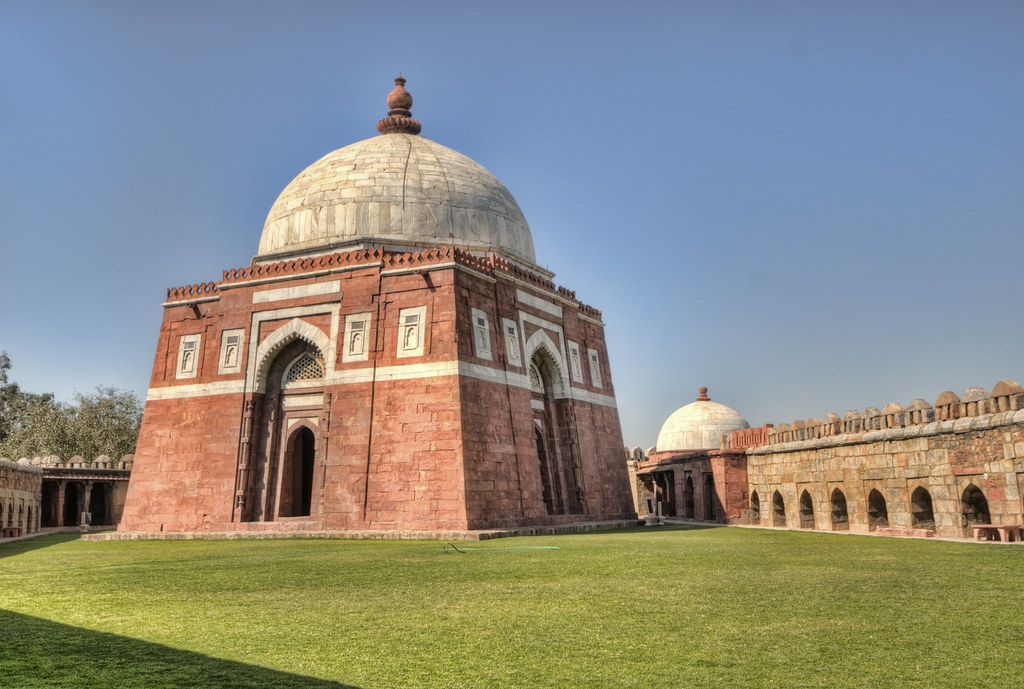
Ghiyas ud-Din Tughluq was the founder of Tughluq dynasty of the Delhi Sultanate in India. Within a year of his reign, he decided to build the new fortified capital of Tughluqabad very close to the previous capital in Delhi, where he moved three years later. He also built a tomb for himself in Tughluqabad. After his death, his successor Muhammad bin Tughlaq, moved back to Delhi and left Tughluqabad to crumble and decay gradually. However, the tomb of Ghiyas remains there in a very well preserved condition. The tomb was constructed in 1325 and is built of red sandstone and white marble, commonly used in Islamic structures. It has a dome of white marble. It is one of the earliest masterpieces built of red sandstone and white marble. The square tomb is in the center of a pentagonal enclosure with high walls. There are entrances on the north, east and south sides. No Minarets are surrounding the tomb. A notable feature of the tomb is the sloping walls, at a 75-degree angle with the ground instead of vertical walls. This architectural style is similar to the sloping walls of the Hindola Mahal (Swing palace) in Mandu, Madhya Pradesh. The Ghiyas tomb exhibits peculiar Hindu influences in the form of a kalassa (pinnacle) on top of the white marble dome and a redundant stone lintel installed just below the arch.